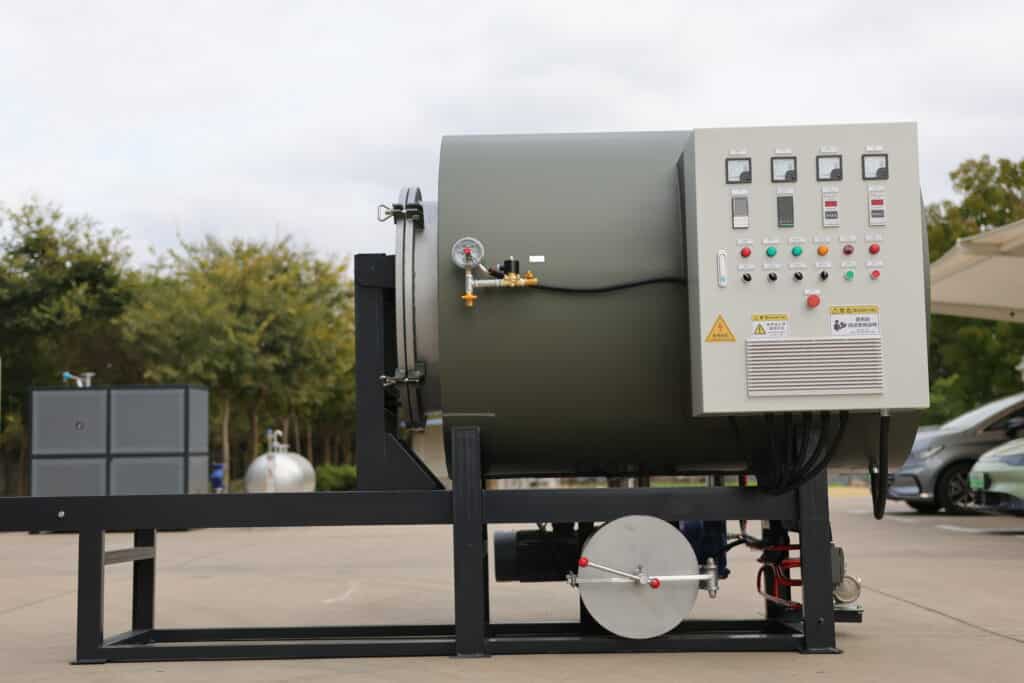What is the cleaning effect of vacuum cleaning furnace?
Vacuum cleaning oven is a kind of equipment for cleaning in a closed vacuum environment, which is widely used in many industries. It is capable of efficiently cleaning different types of parts, equipment and material surfaces through a variety of technical means such as high temperature, vacuum airflow and chemical solvents. Compared with traditional cleaning methods, vacuum cleaning ovens have significant advantages and can provide more efficient, safer and more environmentally friendly cleaning results. Next, we will discuss in detail the cleaning effect of vacuum cleaning furnace and its performance in various fields.
I. Highly efficient removal of surface contaminants
One of the main advantages of vacuum cleaning ovens is the ability to efficiently remove surface contaminants in a vacuum environment. Under vacuum, there are fewer gas molecules on the surface of the workpiece, which allows the cleaning solvent to penetrate and react with the contaminants more efficiently, thus removing oil, dust, oxidation, grease and other impurities. Especially at high temperatures, vacuum cleaning ovens accelerate the cleaning process and ensure that the surface of the parts is completely clean.
- Applicable Scenarios: Precision mechanical parts, electronic components, aerospace parts and other applications that require thorough removal of oil, dust and other contaminants.
Second, non-contact cleaning, to avoid physical damage
Traditional cleaning methods, such as brushing, spraying, etc., often require contact with the surface of the cleaned workpiece, which can easily lead to scratches or damage to the surface of the workpiece. The vacuum cleaning furnace adopts the vacuum airflow cleaning method, which can complete the cleaning task under non-contact conditions. This non-contact cleaning method effectively avoids physical damage, especially suitable for cleaning precision components and high-value parts.
- Applicable ScenariosIt is used for cleaning precision electronic components, optical lenses and other products that require very high surface quality.
Third, clean thoroughly, leaving no dead ends
Due to the unique airflow characteristics of the vacuum cleaning oven's cleaning environment, it is able to clean deep into all corners of the workpiece, ensuring that every inch of the surface is thoroughly cleaned. This deep cleaning effect is ideal for complex shapes or parts with deep hole structures, avoiding dead corners that are difficult to clean with traditional cleaning methods.
- Applicable Scenarios: Suitable for the cleaning of complex structural parts, such as automotive engine parts, aerospace parts, etc.
IV. Removal of oxides and rust
Vacuum cleaning ovens not only remove oil and dirt, but also effectively remove oxides and rust from the surface of metal parts. Through the chemical reaction in the high temperature vacuum environment, the oxide and rust layer will be effectively removed, restoring the brightness and precision of the metal surface. This property is widely used in metal processing, aerospace, machinery manufacturing and other industries.
- Applicable Scenarios: Used for removing oxidised layers and rusty substances from metal parts in industries such as aerospace, automotive and machinery manufacturing.
V. Environmental safety, reduce solvent pollution
Compared with the traditional solvent cleaning method, the vacuum cleaning furnace has more outstanding environmental performance. Solvents and gases from the vacuum cleaning process can be recovered and filtered, reducing environmental pollution. In addition, the chemical solvents and cleaning agents used in vacuum cleaning ovens typically have low volatility, helping to reduce safety hazards.
- Applicable Scenarios: Suitable for industries requiring high environmental standards, such as pharmaceutical, food, and medical device manufacturing.
VI. Improving product quality and productivity
The use of vacuum cleaning ovens can significantly improve productivity and product quality. Due to its ability to clean efficiently, it can reduce the secondary pollution of parts and improve their subsequent processing accuracy. The surface of the cleaned parts is smooth and clean, which reduces the failure rate in production and improves the yield. In addition, the vacuum cleaning furnace has a high degree of automation, which can reduce the error and instability caused by manual cleaning, thus improving the overall production efficiency.
- Applicable Scenarios: Industries with mass production and batch manufacturing, such as electronics, automotive, and machinery manufacturing.
Seven, easy to operate, low maintenance costs
The operation of the vacuum cleaning furnace is relatively simple, the equipment adopts automatic control system, the staff only need to set up the basic operation of the equipment, the cleaning process can be carried out automatically. Due to the compact structure of the equipment and mature technology, low maintenance costs, and long service life, is the ideal choice for cleaning needs of various industries.
- Applicable Scenarios: Widely used in industrial equipment that needs to be cleaned regularly, such as automotive manufacturing, machining, and electronics production.
summaries
Overall, vacuum cleaning ovens have become the first choice for cleaning in several industries due to their high efficiency, environmental friendliness, non-contact and deep cleaning characteristics. Whether it is in the removal of oil, oxide layer, or cleaning precision components, complex structure parts, vacuum cleaning furnace can provide excellent cleaning effect. With the continuous progress of technology, the application prospects of vacuum cleaning furnace will also be more extensive, providing more efficient, safer and more environmentally friendly cleaning solutions for various industries.
Our company can non-standard custom products, click the menu barContact UsReady to customise or refer to firstproduct pageAppreciate our company's products oh!
Recommended Reading:
